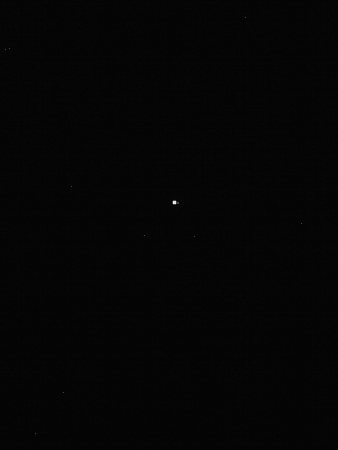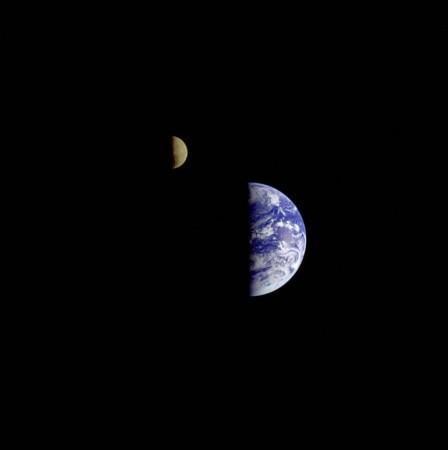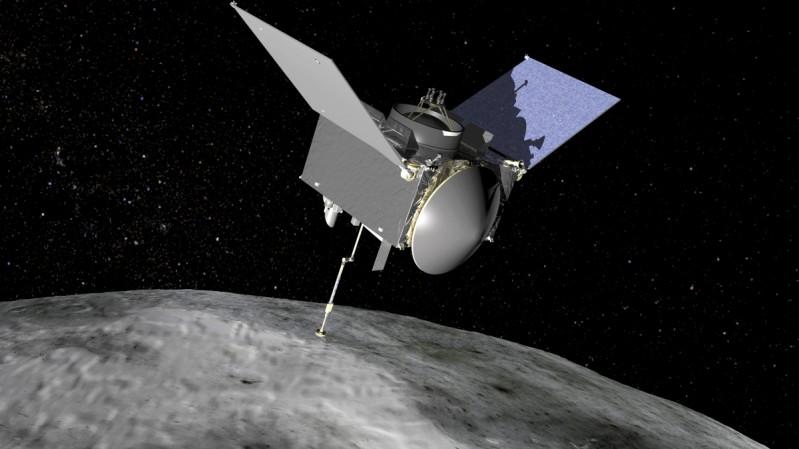
NASA's OSIRIS-Rex spacecraft has captured a new image of Earth and moon while it was on its way to analyze the asteroid Bennu.
The image was captured by the SUV-sized OSIRIS-REx spacecraft on January 17, 2018 with the help of its NavCam1 imager from a distance of around 40 million miles (63.6 million km).
The OSIRIS-REx spacecraft's NavCam1 is a grayscale imager, which is a part of the TAGCAMS (Touch-And-Go Camera System) navigation camera suite.
OSIRIS-REx was flying at 19,000 miles per hour (8.5 kilometers per second) when it captured this amazing picture.
Earth appears as the largest radiant spot present at the center of the image, while the moon appears to be dim and can be seen towards the right of Earth.
"The bright cluster of stars in the upper left corner is the Pleiades in the Taurus constellation. Hamal, the brightest star in Aries, is located in the upper right corner of the image," a NASA statement said.

Another stunning image of the Earth and Moon was captured in the same frame by Galileo spacecraft in 1992. The image was digitally enhanced to improve the visibility of the Moon, NASA revealed.
More about asteroid Bennu

OSIRIS-REx has been sent to investigate Bennu, a small, round, near-Earth asteroid. The spacecraft's mission is to collect a 2.1-ounce sample of the space rock and send it to Earth for research and analysis.
Measuring 500 meters across, asteroid Bennu's orbit around the Sun is slightly wider than that of Earth. The spacecraft OSIRIS-Rex has been sent to orbit Bennu and find the best spot for accumulating samples of the asteroid with the help of its nitrogen gas thrusters.
The revelations from this asteroid and its sample could help astronomers unravel the origins of life. This asteroid is speculated to have been formed 4.5 billion years ago and is also estimated to be a residue of the Solar System's building blocks.

















